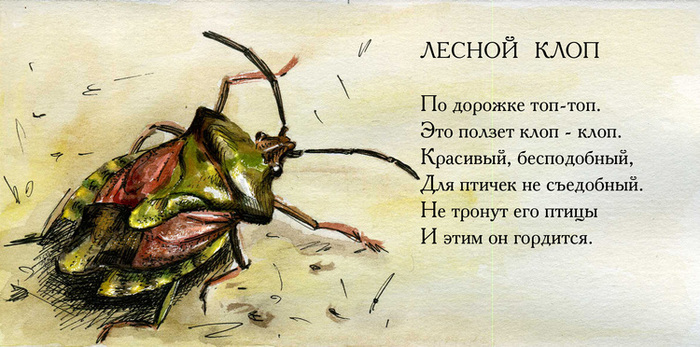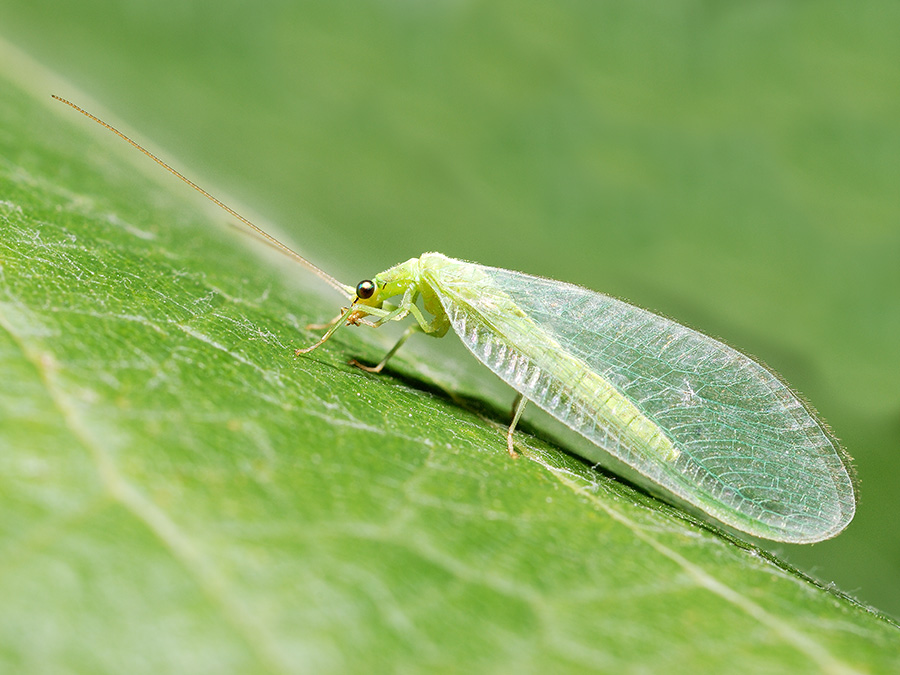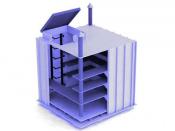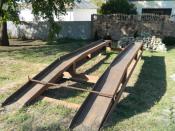Search
Login
Healthy insects in the garden
Destroying harmful insects, we often forget about insects - helpers, and some gardeners do not even know about them. There are not so many useful insects, but they bring substantial benefits to our garden by eating harmful aphids, beetles, spider mites and their larvae. What benefits insects bring, how to recognize allies during pest control and keep them on the site, read our article.
Content
- How to keep beneficial insects video
- ladybug
- Forest bug
- Predatory tick
- Ghost
- Afelinus - a parasitic wasp
- Dragonflies, diving beetles
- Lacewing
- Useful insects - living conditions video
How to keep beneficial insects
First of all, in the fight against harmful insects, as a rule, pesticides are used, so that probably not a single bug survives. Along with the enemies, we thus deprive the garden plot of natural defenders - predatory insects. Predatory insects do not feed on leaves, branches and fruits like pests like them, they eat aphids, larvae, various beetles, caterpillars and spider mites.

Selective insecticides, designed to destroy a specific pest, will help to save other insects, and to preserve the ecosystem in the garden, it is recommended to use natural compounds of manure, extracts and decoctions. The following are the most common beneficial insects.
ladybug
In appearance, ladybugs are the most harmless and very beautiful insects, in fact they are real predators, only the ladybug larva eats more than a hundred aphids, and when it becomes an adult, it attacks spider mites, caterpillars, mealybugs, leaf-worms and butterfly larvae. The larvae of ladybugs are somewhat different in appearance and color from adult insects, they are more like thick orange caterpillars with three pairs of legs.

For the survival of ladybugs in the garden, under bushes and trees, you should not cut the grass too low and do not remove the fallen leaves so that the insect calmly wintered in them.
Forest bug
We find bugs on fruit trees and shrubs from early spring to late autumn. Forest bugs feed on eggs of caterpillars, spider mites, leaf-sheath and other pests.

A wintering bug in fallen leaves and tree bark, dies from any use of chemical pesticides.
Predatory tick
A predatory tick is practically invisible to our eyes (length up to 0.5 mm), appears in early spring on the surface of the bark and leaves of plants in search of pests.

Its main diet is insect larvae, spider web and four-legged mites. When there is insufficient nutrition for a tick, it can feed on pollen and leaf juice, without causing significant damage to the plant.
Ghost
Often the beetle is confused with the wasp due to its characteristic coloration, the insect has several varieties (common beetle, transparent beetle and bumble beetle) and is not at all dangerous for humans. Adult beetles use nectar as food, while larvae completely destroy aphids and eggs of the Colorado potato beetle.

To attract these insects, it is enough to plant in the garden plants with a strong aroma - thyme, marigold, dill, mint, sage.
Afelinus - a parasitic wasp
A parasitic wasp with a length of about 1.2 mm was specially imported from North America to combat the cotton and blood aphids; it looks like an elongated fly with a thin abdomen and a needle at the end. The insect kills pests in a very interesting way - it lays eggs in aphids, the larvae hibernate in the enemy’s body, and in the spring leave their nutritious dwelling.

Wasp larvae are very voracious, for this reason, if the aphid is eaten before the onset of warm days, the future insect will die.
Dragonflies, diving beetles
Dragonflies also belong to assistants in the garden, especially if you have a pond or other body of water.

Dragonflies and beetles are swimming on flies, mosquitoes and their larvae, making it easier for you to relax.
Lacewing
A beautiful insect with golden eyes and delicate wings 10-15 mm long often flies in the open windows of our houses. Adult insects eat only pollen and nectar of flowers, but their larvae are very voracious and do not mind eating aphids, thrips and mealybugs.

The lacewings hibernate under the bark of trees, in the crevices of wooden buildings and lay eggs at a temperature of 20-25 C. The lacewings, as a rule, die during the first frosts, so it is important to provide them with housing, which is described below.
Useful insects - living conditions
Gardeners are not always able to maintain ideal conditions for the propagation of predatory insects, therefore, like a person, they need a house, a place where eggs will be laid, where garden care assistants will be reborn. The house is built from natural materials such as reeds, straw, moss, reeds, pieces of dry wood, stumps, wooden boards, clay and hollow bricks.
It is best to start construction in the spring, when insects are looking for reliable places for offspring, but you can start in the autumn, in this case, you will provide insects with shelter for wintering. The place where the house will be located should be protected from wind and rain in partial shade of fruit trees or under a canopy. A pile of stones and a small haystack will serve as a house, as long as it is dry and comfortable for your allies.





